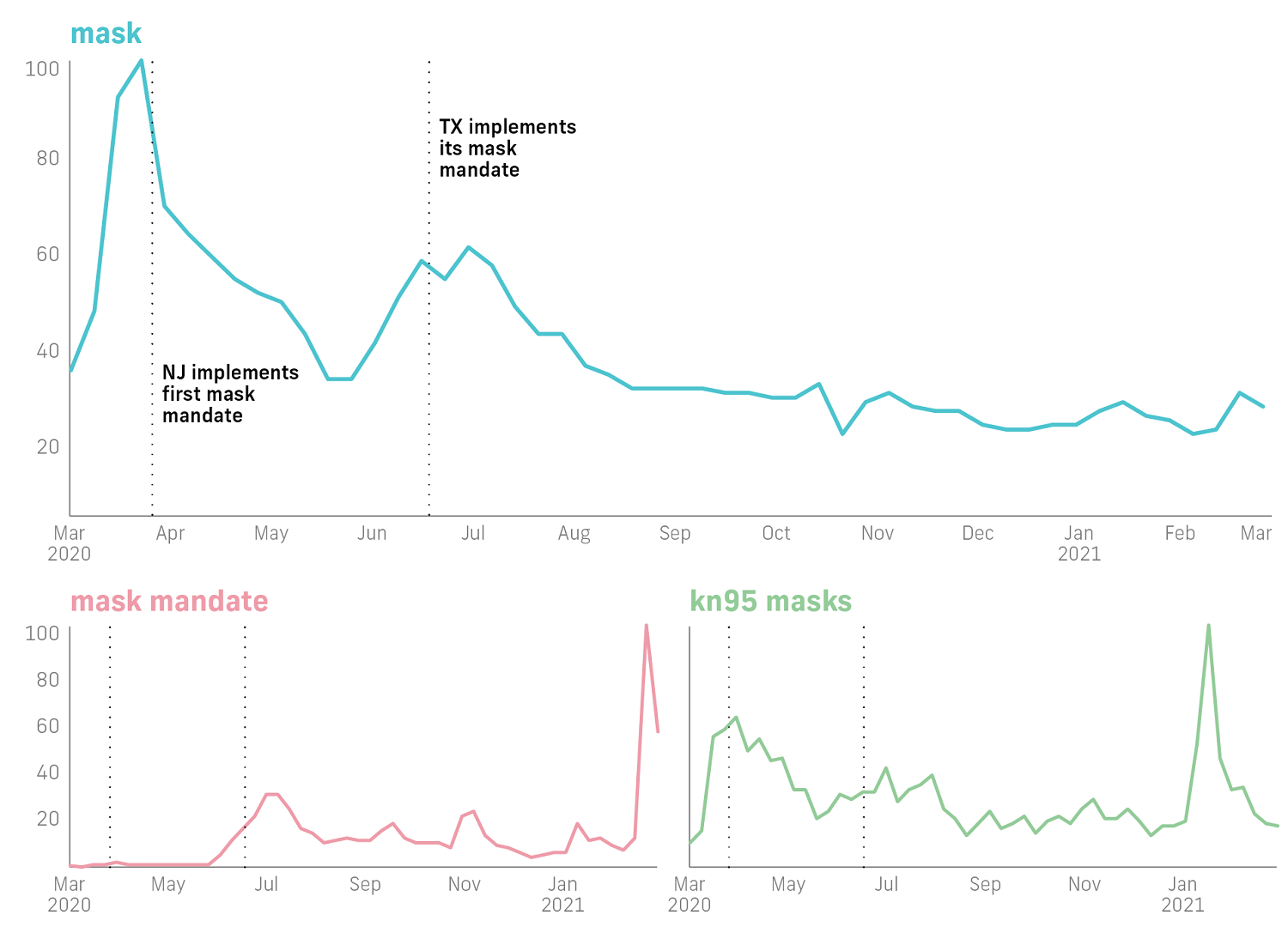


Click here to see all of PopSci’s COVID-19 coverage.
It’s been a bumper year for jargon. Curves to be flattened, social distance to be maintained, and triple-layer masks to be donned.
There was a lot to learn. So one way of viewing this pandemic twelve months in might be: what info have we been looking for? That’s a story sketched out by a year’s worth of Google searches. Here are some of the prevailing themes that emerged in our collective queries.

On March 19, in a news briefing at the White House, Trump first expressed an interest in using hydroxychloroquine to treat COVID-19. From there, the drug—an anti-malarial medication with potentially deadly side-effects—exploded onto the national stage, and within two weeks, the FDA was distributing doses from the national stockpile to local hospitals.
When the drug stepped into clinical trials and out of the limelight, though, attention faded. That is, until Trump brought it up again: once, on May 18, when he revealed that he was taking hydroxychloroquine as a preventative measure, in spite of specific guidance from the FDA against that practice; and again at a July 28 conference when he hyped a much-criticized study. On the other hand, the June 15 news that the FDA had revoked hydroxychloroquine’s emergency use authorization barely made a splash.

Interest in masks built slowly over the course of February 2020, as cases were discovered first outside China, then in the Seattle area. But it stayed at a slow boil as the CDC and other government agencies gave conflicting advice on the utility of cloth and surgical masks. That changed almost overnight when first cities, then entire states enacted mask mandates. Suddenly, with a shortage of masks to meet new requirements, community sewing groups sprang up to figure out what counted as a mask.
National interest spiked again in July, around the time that growing transmission in the Midwest and South led to mask mandates in states that had initially resisted restrictions. Texas, struggling to contain overwhelming outbreaks in its major cities, passed its first mandate on July 2.

People started wondering how the coronavirus will mutate almost as soon as it appeared in the US. For most of the year, the question of mutation was speculation at best. There’s one notable exception: coverage of a more-infectious coronavirus mutation, published in May before research had gone through peer review, was generally panned as hype. But by July, it became clear that the initial findings had been correct, and the mutation, D614G, was dominating outbreaks worldwide for reasons that still aren’t well understood.
But the role of mutation in the pandemic took the fore in mid-December, as the global scientific community began to document a trio of concerning strains. One, first documented in the United Kingdom, appears to be both more infectious and more virulent. Two others are able to reinfect recovered patients, and may dull the edge of vaccines. But interest has flagged as the winter surge transitioned into a slow decline in cases, even as the US has continued to document new mutants.

In the first weeks of the pandemic, there were two golden rules: wash your hands, and stay six feet apart. We watched hand washing tutorials, and figured out tricks to remember social distancing rules. (Two shopping carts, one elk-length, a giant hula hoop.)
As virologists have reconfigured our understanding of COVID transmission—it’s through the air, not on surfaces—it makes sense that compulsive hand washing has faded. Unfortunately, so has social distancing. Either we’ve got it figured out, or we’re just too tired to keep moving through the world with an invisible force field. Or maybe a bit of both.

Just after March 11, when the World Health Organization declared COVID-19 a pandemic, and as bars, then schools, then cities began to close, searches for vaccines ticked up. Maybe we were already wondering what it would take to get to the other side. But Operation Warp Speed, the massive federal program to speed the development and production of a working COVID vaccine, was only announced on May 15.
As Pfizer’s vaccine neared emergency approval, interest began to tick up again. But it came paired with searches about side-effects of the shot, which may have been driven by news of allergic reactions from the UK. (Though they got a lot of press time, these reactions were and still are extremely rare.) But when the vaccine became available to the general public, just after Moderna’s shot was approved on December 18, searches were becoming practical: suddenly, we can see a way out.
